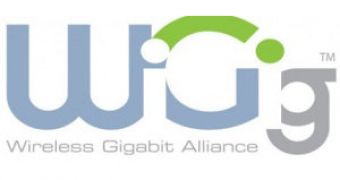Japanese electronics producer Panasonic has recently announced that it managed to develop a 60GHz wireless communication technology for mobile devices.
Usually, mobile devices only use the 2.4GHz and 5GHz bands in high-speed wireless communication, while the 60GHz is employed only by stationary devices such as TVs due to higher energy consumption associated with the use of wider frequency bandwidth.
However, Panasonic successfully optimized the 60GHz multi-gigabite wireless communication technology to work with mobile device and support WiGig and/or the IEEE802.11 specifications.
According to the developers, this technology comprises of a 60GHz transceiver and a baseband processor which are integrated individually onto a CMOS semiconductor chip through circuit technologies optimized for mobile devices.
Due to the use of the new technology, mobile devices will be capable of reaching speeds of more than 20 times faster than existing wireless LANs, only by using the 60GHz frequency band.
In addition, Panasonic stated that it managed to optimize both the transceiver core and peripheral circuits to enable lower than 1W low-power.
It appears that with the new high-speed communication technology users will be able to transfer a 30-minute long compressed high-definition (HD) video content within 10 seconds.
Still, the most important thing when it comes to wireless communication on wider frequency bandwidth, the energy consumption has been reduced to lower than 1W for the mobile device's radio function unit.
As Panasonic suggests, the company holds 16 domestic patents and 16 overseas patents, including pending applications for the new technology.
Some of the features of the Panasonic's new technology include:
- the world B lowest noise signal generator (-95dBc/Hz at 1MHz offset frequency) that enables high sensitivity wireless performance.
- the circuit size of decoding block is 30% smaller than that of Panasonic B conventional architectures by optimizing decoding circuits, which results in lower power consumption.
- support for WiGig specification, which is going to be an industry standard for a multi-gigabit, short range wireless communication system.
The new technology will be demoed at ICC 2011 (International Conference on Communications 2011) held in Kyoto, Japan this week.

 14 DAY TRIAL //
14 DAY TRIAL //